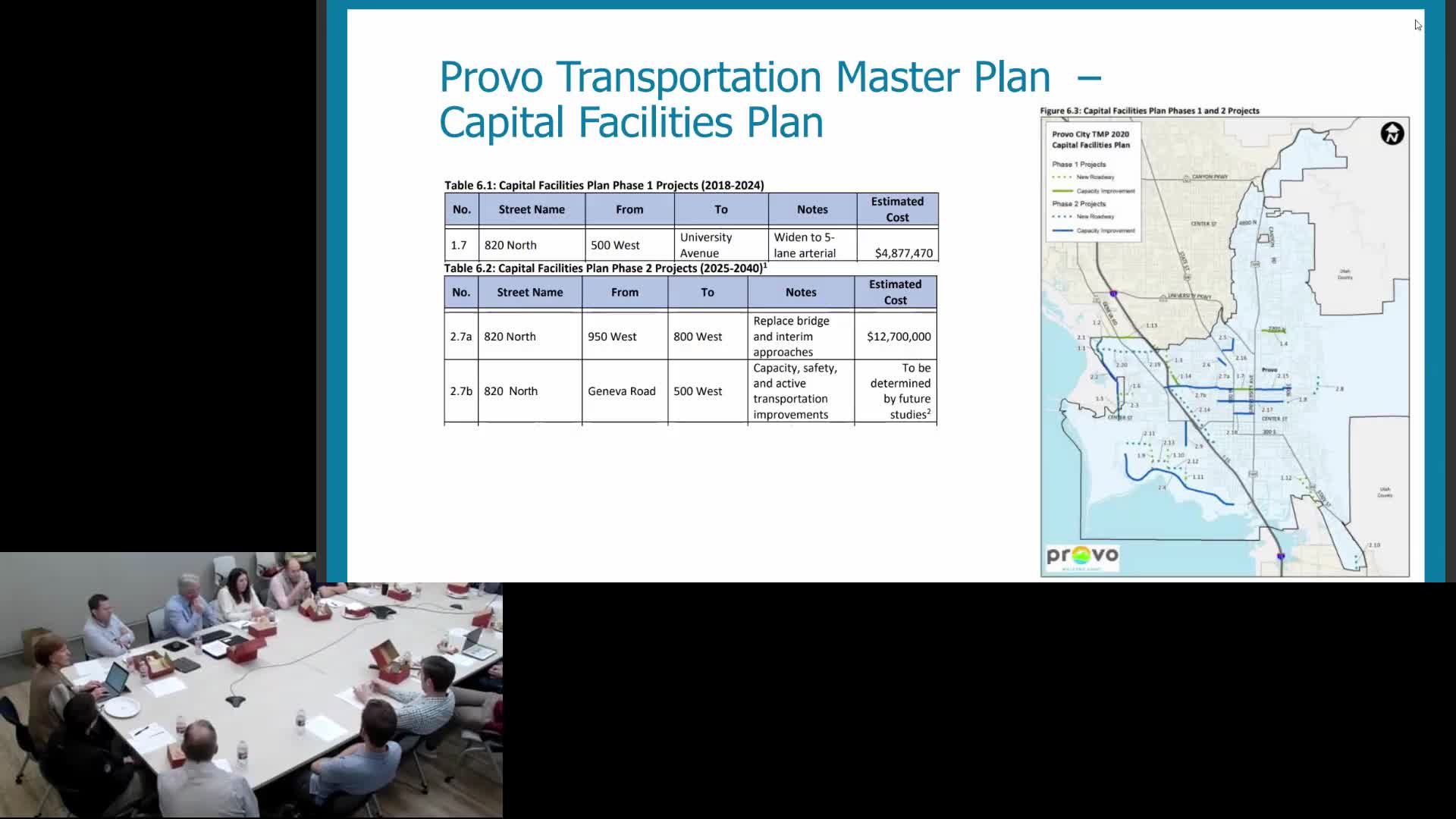Provo plans ambitious transportation upgrades for future growth
April 17, 2024 | Provo City Transportation & Mobility Advisory Committee, Provo, Utah County, Utah

This article was created by AI summarizing key points discussed. AI makes mistakes, so for full details and context, please refer to the video of the full meeting. Please report any errors so we can fix them. Report an error »

During a recent government meeting, officials discussed the Provo Transportation Master Plan, highlighting its unique approach to livability standards in transportation—a concept not widely adopted in Utah. The plan, developed in 2000, emphasizes the importance of balancing traffic capacity with community livability, a topic that has gained renewed attention as traffic counts in Provo continue to rise.
Current traffic counts show over 11,000 vehicles per day on key routes, with projections indicating continued growth, particularly on the Westside. Officials noted that the existing infrastructure, including limited access points across I-15, poses challenges for accommodating this growth. The discussion underscored the need for improved connectivity, particularly east-west routes, to facilitate better access across the city.
Concerns were raised about the adequacy of the current travel demand model used by regional planning authorities, which some officials criticized for not adequately accounting for potential transit improvements or alternative transportation options. The model's limitations were highlighted, particularly in its failure to reflect a transit-focused future, despite existing rail and bus lines.
Funding for future projects remains a significant hurdle, with many initiatives pushed back due to financial constraints. The meeting concluded with a commitment to explore potential cross-sections for future developments, emphasizing the need for a comprehensive approach to transportation planning that prioritizes both traffic efficiency and community livability.
Current traffic counts show over 11,000 vehicles per day on key routes, with projections indicating continued growth, particularly on the Westside. Officials noted that the existing infrastructure, including limited access points across I-15, poses challenges for accommodating this growth. The discussion underscored the need for improved connectivity, particularly east-west routes, to facilitate better access across the city.
Concerns were raised about the adequacy of the current travel demand model used by regional planning authorities, which some officials criticized for not adequately accounting for potential transit improvements or alternative transportation options. The model's limitations were highlighted, particularly in its failure to reflect a transit-focused future, despite existing rail and bus lines.
Funding for future projects remains a significant hurdle, with many initiatives pushed back due to financial constraints. The meeting concluded with a commitment to explore potential cross-sections for future developments, emphasizing the need for a comprehensive approach to transportation planning that prioritizes both traffic efficiency and community livability.
View full meeting
This article is based on a recent meeting—watch the full video and explore the complete transcript for deeper insights into the discussion.
View full meeting

